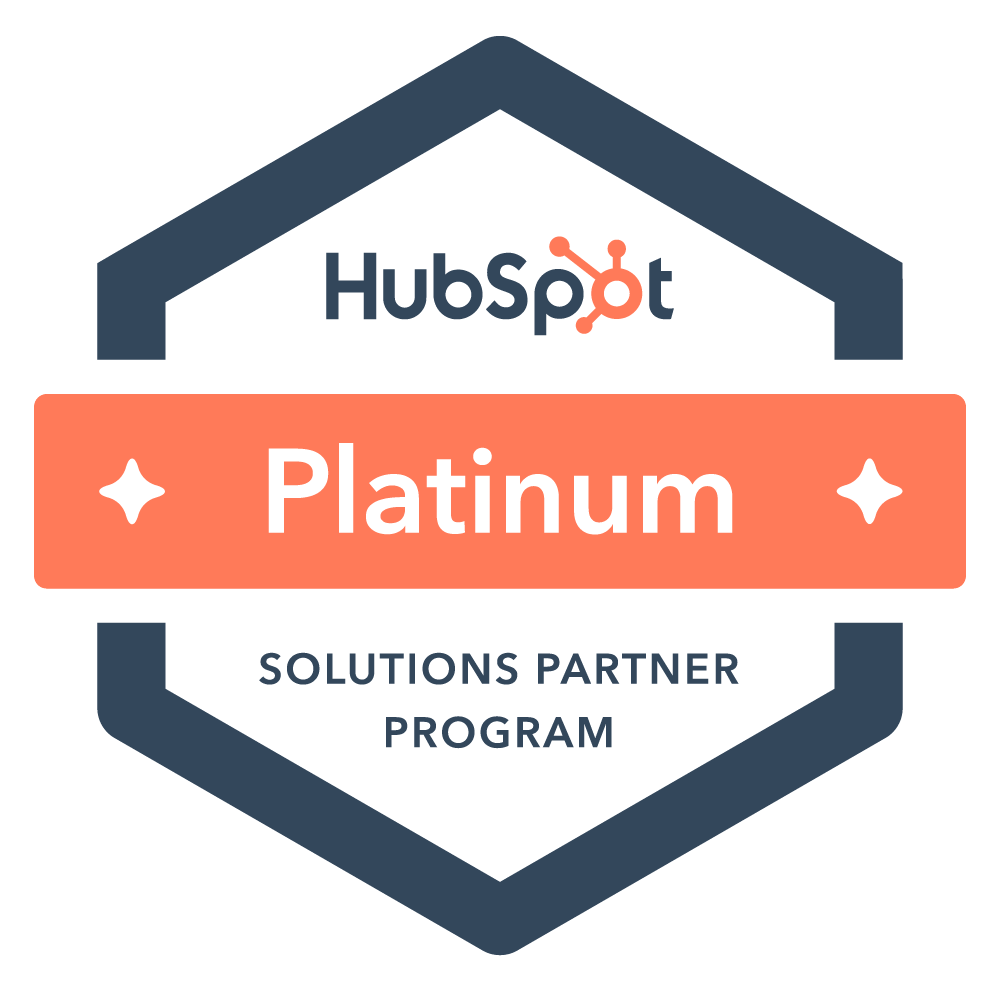![[Cornerstone Article] Sales Enablement for SaaS- The Complete Guide to Inbound Sales -02](https://blog.launchpadmy.co/hs-fs/hubfs/%5BCornerstone%20Article%5D%20Sales%20Enablement%20for%20SaaS-%20The%20Complete%20Guide%20to%20Inbound%20Sales%20-02.jpg?width=1920&name=%5BCornerstone%20Article%5D%20Sales%20Enablement%20for%20SaaS-%20The%20Complete%20Guide%20to%20Inbound%20Sales%20-02.jpg)
Looking for ways to rake in more sales and other sales enablement tactics for your SaaS?
As a Software as a Service (SaaS) company, you know how important it is to meet quarterly sales targets. You know how many churns are acceptable and how many SQLs needed before you’re confident your sales goals are met. But you’re wondering what else could you do to improve your sales team?
In this guide, we’ll attempt to answer your questions about SaaS sales enablement, what technology you could use, and ways to boost your team sales performance. There are many sales enablement technologies out there, and we’ll highlight some that SaaS businesses could leverage on.
In a broad sense, there are two types of SaaS: B2B & B2C. Most B2C SaaS works on a freemium model, where customers are given a limited free trial period or a ‘free forever’ package that would require paid upgrades in order for customers to make full use of the software. Spotify, Netflix, and NordVPN are some popular B2C SaaS that might come to mind.
B2B SaaS, on the other hand, is highly consultative. It has a longer sales cycle and needs a more customer-centric approach. B2B SaaS usually would offer different packages that caters to the size of its clients. Smaller scale clients would use only one part of your SaaS, while medium-size clients could use the standard package with more features. Shopify is a clear example of a B2B SaaS. Aside from the plans they offered, Shopify also has Shopify Plus to provide customised plans to bigger companies.
All Your Questions on SaaS Sales Enablement
1. Common SaaS sales metrics that you need to keep an eye on
2. How to differentiate your sales process
3. What is inbound sales & why should you care?
4. How to boost sales performance for SaaS?
5. How to increase SaaS sales productivity & efficiency?
6. How to improve your sales while working remotely?
7. What is SaaS sales technology?
8. Should you continue using Excel spreadsheets?
9. Why should you adopt sales technology?
10. What are some SaaS sales technology you can use?
11. Final questions to ask before adopting sales technology
1. Common SaaS sales metrics that you need to keep an eye on
As a SaaS sales manager, there are so many metrics you have to monitor. These metrics are some of the more important ones you should look out for:
SQL: This is the number of hot leads that are ready to talk to your sales rep and have expressed interest in your service. They’ve ticked some actions (e.g filling a form) and have enough points to be a Sales Qualified Lead (SQL). This point-based system of ranking your leads is called Lead Scoring.
ARPU: Average Revenue per User (ARPU) is calculated by dividing the total revenue of your business in a given period by the number of customers in that same period. This metric helps you gauge how much your customers are spending on average.
ARPPU: If you offer free tiers of your SaaS, you can go even further and segment ARPU from the Average Revenue per Paying User (ARPPU). ARPPU helps you measure the small segment of your most valuable customers who are paying for your services, compared to the larger set of free users.
LTV: Customer Lifetime Value (also known as CLTV). This metric calculates the present value of future cash flows from one subscriber before he or she churns. This is where annual subscribers are valued more than monthly subscribers. LTV is roughly calculated by multiplying ARPU with the average customer lifetime. LTV tells you how good you are at retaining customers.
CAC: Customer Acquisition Cost. You calculate this by dividing the total cost for acquiring customers over a period of time (say per quarter) to the number of acquired customers in the same period. CAC can be high, since acquiring new customers is more expensive than retaining existing ones. So ideally, we want our CAC low and our LTV high to know if we’re making money or just siphoning them out.
Churn: Cancellation rate. Churn is measured in percentages by dividing the number of users who cancelled at the end of a period with the number of sign ups at the beginning of the period. 5-7% monthly churn is the usual benchmark for many SaaS companies.
MRR: Monthly Recurring Revenue. This is the number of predictable sales that comes from subscriptions and renewals. It can be calculated by multiplying ARPU with the total number of customers in a given period.
Product-Market Fit: This is the degree of how your service fits into the demand of the market. As a SaaS business, you have to make sure early on if your service targets the right audience and can satisfy their pain points.
2. How to differentiate your sales process

There are generally two orientations of looking at your sales techniques:
- Outbound ← → Inbound
On the far left of the spectrum is outbound sales, where sales reps aggressively seek prospects without first understanding their individual needs. Whilst on the opposite side of the spectrum lies inbound sales. Here, sales teams have to first determine whether a prospect is right for your SaaS service before even connecting with them.
Outbound is not necessarily outdated since many companies still use outbound methods especially during the first stages of the buying process. But it should be used as a supplement to largely inbound marketing and selling strategies. We’ll talk more about inbound sales in the next section.
- Traditional ← → Digital
Inbound techniques can be used in both traditional and digital channels. This can be said the same for outbound sales. But as a SaaS, it is a given that your customers are mostly found on the internet. Digital channels include websites, social media, instant messaging, emails and sales technology.
Read more: Inbound vs Outbound Marketing - A Comparison [Infographic]
3. What is inbound sales & why should you care?
Imagine yourself as the everyday customer browsing through the internet. Can you guess how many ads they would have seen in a day? Did you guess 5,000?
Customers are so bombarded with advertisements both online and offline that they have evolved to tune out the noise, rendering traditional outbound selling methods ineffective. Inbound sales comes in as a better alternative to attract the modern customers in a more helpful and personalised way.
Inbound salespersons act not just as mere promoters and brochure-pushers. Instead, they are trusted consultants who listen to your customers’ needs and pain points. They adapt their sales process using the buyer’s journey and identify when the customer is ready to subscribe and sign the deal.
Why should you care?
Why should SaaS adopt the inbound sales method? Well, have you noticed that cold-calling doesn’t work as effectively as it did 10-20 years ago? What about account control and buyer’s decision?
Buyers have long adapted to digital buying behaviours. They have better information before deciding thanks to search engines and online reviews, more so for SaaS consumers. They know what they want long before your service comes into the consideration.
-
Only 3% of buyers trust sales reps. The only professions with even less credibility are car sales and politics.
-
50% of buyers think salespeople are pushy.
-
At least 50% of your prospects are not a good fit for what you sell.
(Source: Hubspot Sales Stats 2021)
The modern buyer is smarter and more technologically-savvy. You should be too. Which is why inbound sales works well with this type of customers who are actively participating in the sales process. They’re no longer just sitting ducks waiting for reps to present pitch decks to them. Instead, they want to be listened to and their questions answered.
What is the inbound sales methodology?
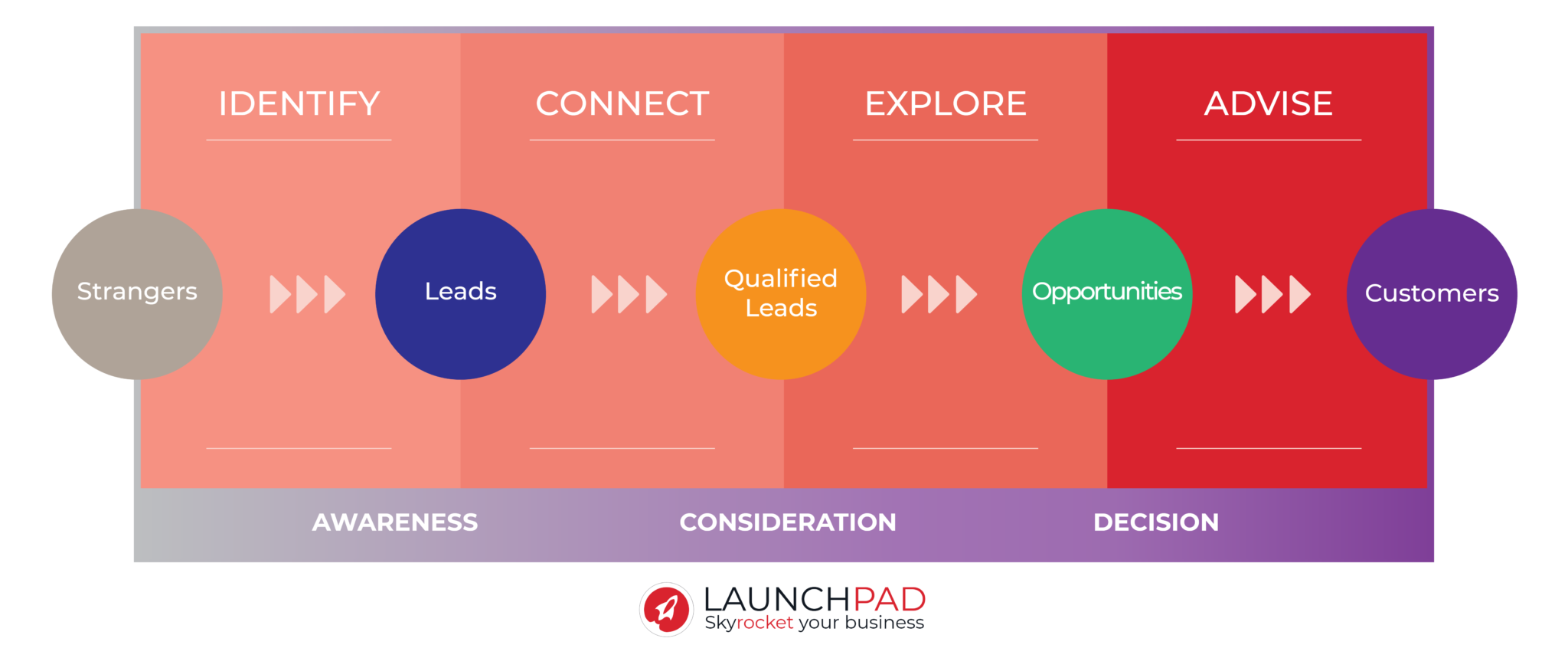
In a brief summary, inbound sales works in 4 stages; Identify, Connect, Explore, Advise.
1. Identify
The first stage is identifying the right prospects. One of the biggest factors for failed businesses is the failure to target the right people. We would usually use the Buyer Persona and Buyer’s Journey to get the profile of customers as accurately and detailed as possible.
Read more: What is a Buyer Persona?
2. Connect
A traditional outbound way of connecting with customers might look something like this: Sales reps repeating the same pitches and presentations whether or not the prospect is ready to listen (let alone paying attention).
In comparison, when using inbound methods, we would modify our message to fit into individual prospects. Doing this means that we have to know the ins and outs of each prospect and approach them at a pace and place that they’re most likely to engage with us.
3. Explore
This is the stage where we explore the prospect’s challenges and needs. We build trust through a genuine conversation that makes the prospect feel empowered and appreciated. We discuss how we can solve their challenges and whether they are suited for the SaaS service we are offering.
4. Advise
Finally, after we understand the full scenario our prospect is facing, we come up with a solution that is uniquely positioned to their predicament. As inbound sales reps, we don’t stick to one script for every sales pitch. We translate our SaaS service benefits to a message that the prospect can understand and relate to.
Inbound Sales Methodology & SaaS
SaaS is one of those industries that rely highly on Product-Market fit. Poor customer fit means higher CAC and overhead, and also means higher Churns. Investors will look at these metrics and sales performance, so will your partners and stakeholders.
Your SaaS might not be meant for everyone, but it could be the most essential service for the right group of people. The inbound method helps you focus all your energy and resources to these people that need you the most.
4. How to boost sales performance for SaaS?
This is the million dollar question; how to multiply my sales especially in this sluggish economy? Consider these strategies:
-
Have a Strong USP
Image source: Shopify
A successful business often starts with determining its business model, brand values, business purposes and a Unique Selling Proposition (USP). These elements will help the business stand out from the competition by offering something new to customers and filling the gap between demand and supply.
What would your SaaS’s USP be? How are you different from many other SaaS out there in the same industry? If you haven’t come up with one, here's an exercise to get you started!
- Make Use of Omni-channel Communication
Omni-channel differs from multichannel in that it ensures a frictionless customer experience. While multichannel does use more than one communication channel, omni-channel integrates them all so that your customers won’t have to repeat the same requests or waste too much time looking for information. Particularly for B2B SaaS, it’s essential to reduce the sales lifecycle and get more out of leads.
- Reduce Churn
To maintain sales, we should retain customers and reduce cancellation rates (thanks, Captain Obvious). But how to reduce churn? Try ‘win back’ campaigns, where you send emails to recently churned customers about what they’ve missed, what’s new with your SaaS and perhaps some promo packages to get them back into it. Of course, you have to then retain them by providing excellent customer service.
- Highlight What Your SaaS Has Done
Every week, send your customers an automated email on what your SaaS has done for them. How many hours of manual work was saved, how many clicks, views or how much resources was saved that week thanks to your SaaS.
- Target Top-of-Funnel (TOF)
Get more leads by targeting TOF using inbound strategies for the awareness or discovery stage. Work with the marketing team to target the right audience and use the marketing & sales funnels. When you begin with a lot of leads funneled from the top, there are more chances for SQLs and more chances to close.
- Up-sell & Cross Sell
One secret for customer delight is up-selling and cross selling your SaaS benefits. Always offer them something more such as useful add-ons, annual subscriptions, or other things your customers will find beneficial to them and save their money. This in return will improve your LTV and be better at retaining customers.
- Play with Pricing
Depending on your grand plan to price your SaaS, you could also play around with pricing to find which amount balances between customer satisfaction and your profit margins. One tip is to not give out discounts too generously, but instead highlight the features of your service and how it can transform the lives of your customers. In other words, make your SaaS sound exclusive and illusive.
- Leverage on Paid Ads
Get your website on top of search results using Pay-per-Click (PPC) advertisements. PPC such as Google Adwords bring your website link to the top page every time a keyword you targeted is entered. PPC can supplement your website ranking and boost brand awareness.
Read More: Which is Better: SEO or PPC?
- Optimise Landing Pages
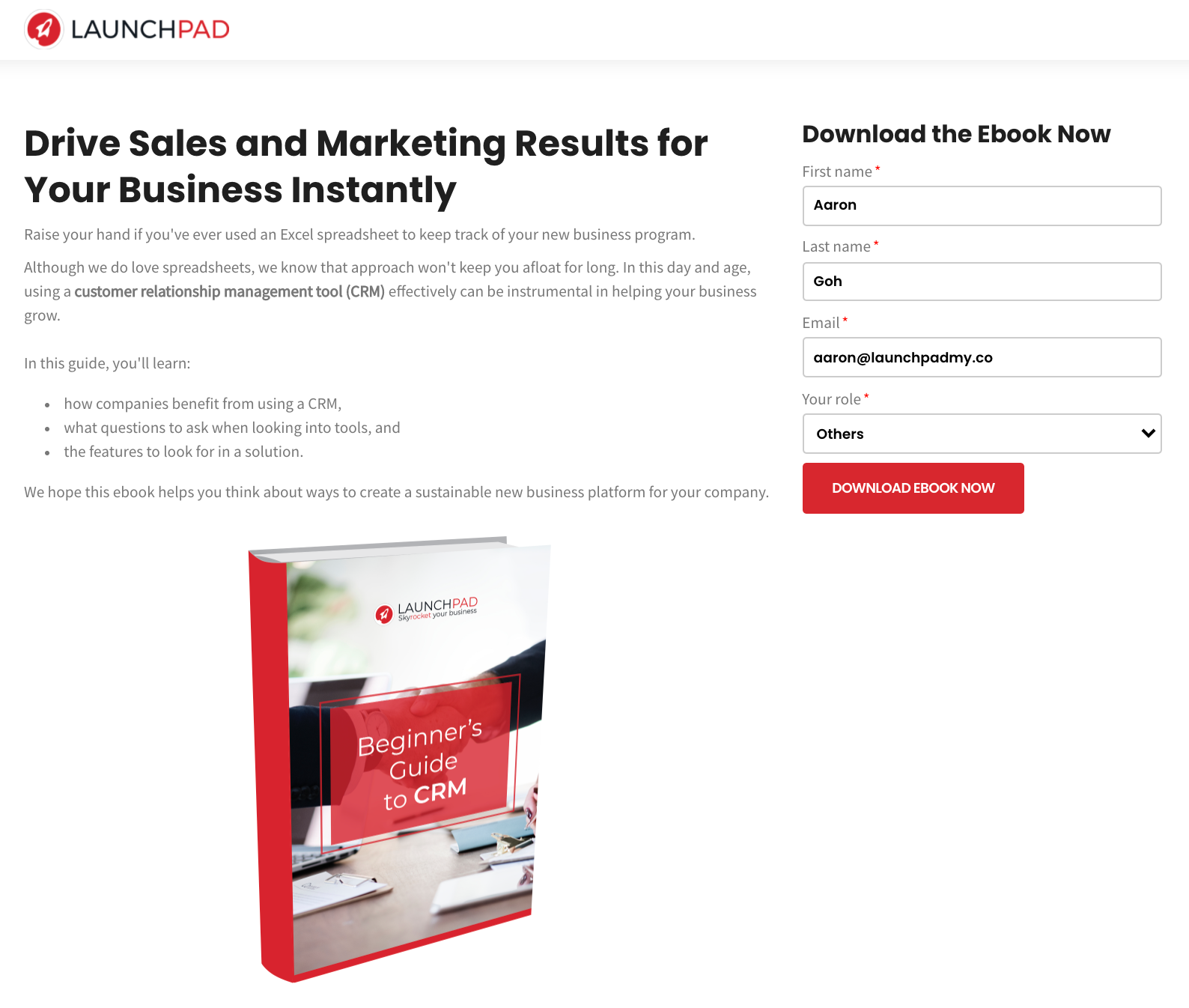
Landing pages are key to your customer conversion. Optimise the page using the right layout, content & copywriting and strategic Call-to-Action (CTA).
- Keep Free Trials Short
Some SaaS experts would even discourage free trial offers, for several good reasons. However, if your SaaS is facing tough competition from other similar services, it’s good to show how yours is different and better with a short free trial. Just make sure to keep free trial versions at bare minimum, just enough for free users to realise that they need the paid upgrade to fully enjoy your service.
- Fortify Customer Service for Best Satisfaction
SaaS companies need a strong customer service team to thrive. Since customer retention fuels MRR, LTV, and other valuable metrics, making sure your customers are satisfied cannot be stressed enough. Ensure that there is some mechanism for your customers to report issues or complaints at all times. We recommend using chatbots on your website that can direct complaints appropriately. You can also make use of your social media page.
- Build Trust with Inbound
Inbound marketing is a method of trust-building with your customers. We usually do this by sharing tips and helpful guides as well as convincing them through customer success stories, testimonials and case studies.
- Offer ‘Done for You’ Data Migration
One of the common pain points for many SMEs who are switching to new platforms is data migration. Bigger enterprises would have no problem paying extra for migration services, particularly because they have a larger amount of data that needs plenty of secure and meticulous handling. But for smaller businesses, you could include data migration for switchers, if that is possible. It can create a good impression and first experience of your SaaS.
5. How to increase SaaS sales productivity & efficiency?
Having troubles with teamwork and productivity? Here are some ways to improve team efficiency for the SaaS workforce:
- Turn Churns Into Challenges & Measurable KPIs
Churns can be demotivating. But rather than fearing churn, try turning it into a challenge while focusing on other KPIs such as MRR. Reframe challenges not as setbacks but as areas to improve.
- Prioritise Tasks
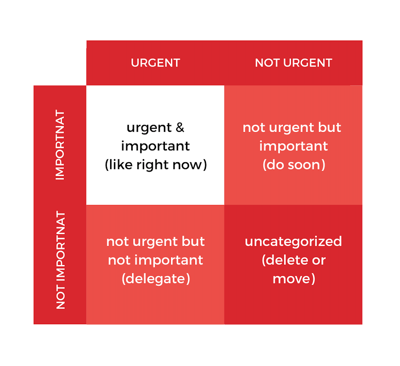 It can be overwhelming when you have so many things to multitask in a day, especially if you’re the decision-maker or decision-influencer. Prioritise your tasks and limit them to an X no. of decision per day so you don’t get overwhelmed.
It can be overwhelming when you have so many things to multitask in a day, especially if you’re the decision-maker or decision-influencer. Prioritise your tasks and limit them to an X no. of decision per day so you don’t get overwhelmed.
- Know When to Stop
Sometimes you’re working on a new product, developing new sales strategies or handling a tough customer. A well-managed SaaS sales team knows when to stop when a venture gets too risky or costly. If it takes too much of your time, energy, motivation and much needed brain power, then it might be time to pull the plug. Focus back on the profitable activities and customers who support you.
- Create a Customer Playbook
As a salesperson, having a customer playbook can greatly help your team standardise the sales process and facilitate their work. A customer playbook is like a game plan that has all the tricks and scripts for your company that engage customers at different stages.
- Re-centre Back to Your Business Purpose
When your business faces a tough decision, look back at why your business is there. What is your purpose as a company and why do you do what you do? A business purpose is something more than profit or numbers. It should serve a higher purpose and help humanity achieve something better or bigger.
- Create Company Values
Aside from a brand purpose, determine the core values that your employees can emulate. It has to be something all of you believe in and be the pillar of your workforce. What does your SaaS company believe in? Great company values motivate the workforce.
- Offer Growth Opportunities
One great way to hype up your sales team is by offering career growth opportunities. While commissions and bonuses might entice some team members, real talent will stay when they feel they can grow with you. So, practice good HR and give merits where it's due.
- Assign PICs and Coordinators
As a SaaS, there are a lot of moving parts and collaborations between teams. And one of the most common reasons for job dissatisfaction is communication breakdown. This can happen when there is no one to act as a coordinator and sees the overall view of your operations. 73% of businesses consider improving collaboration as imperative to success. You can either hire a project coordinator, assign this task to existing team members or use project management tools such as Asana or Trello to reduce the confusion.
6. How to improve your sales while working remotely?
Working from home has been the norm since the past year. While many companies have adapted to the new way of working pretty well, there still tends to be cracks in the process since a lot of people are still new to this. Here are some tips to polish your sales process while working remotely:
- Get Automated!
Are you using automation for your own team? Automation can greatly help remote work, eases communication and allows you to focus on important tasks that need your attention. There are countless automation tools out there for work-scheduling, conference calls, online whiteboards for real-time collaboration and more.
- Setup Weekly KPIs and Goals
We all know how goal-setting and proper planning are big factors for success. They are especially important for remote-working so that team members know what to do and have a direction in their work. Using automation and remote working tools, you can touch base with co-workers every week and catch-up on weekly goals and KPIs.
- Document Everything
Remote work involves a lot of phone and video calls with internal and external parties, more so if you’re a salesperson for SaaS. Which is why it’s common practice to document every conversation in black and white so that everyone gets the same message and no information gets left out. You should also document the work progress of your team with the help of automated project managers.
- Encourage Open Communication

As we mentioned, communication breakdowns are one of the biggest challenges among remote-working teams. Which is why being open to communication is vital for a transparent process that avoids confusion and conflict. Messengers like WhatsApp or Telegram work just fine, but communication apps such as Slack are made for work settings. Slack’s many useful features include a timer to limit after-hours conversations, which helps with work-life balance.
-
Offer Employee Support
We mentioned that some people might still need time adapting to remote work, especially now when the law keeps changing according to the situation. As a sales manager, you can offer employee support wherever you can. Flexibility, for example, can tremendously ease some stress faced by your employees. Some larger companies even pay for the teams’ internet upgrade so video calls can go uninterrupted and smoothen the working process.
-
Tweak the Process & Have Fun
Don’t forget to be flexible with yourself! Find out what works best for your team and get their feedback over the process. Turn mistakes into learning opportunities and try to have fun with the journey. Work behaviours are changing because of technology but it is accelerating right now because of social distancing. Sooner or later, this new norm might become a habit of working for a lot of people.
7. What is SaaS sales technology?
Let’s start exploring the many options for online or digital sales technology. Online sales tools are software or systems designed for sales professionals to make their work easier. This technology can help improve sales enablement for your SaaS and close more quality sales.
How exactly can they help your sales team? There are many sales tools out there, serving a variety of functions, some of them include:
- Gathering and storing data about prospects and leads
- Reminding you of follow-ups and meetings
- Saving your time on admin task (e.g writing and sending contact record, quotation, invoice)
- Facilitating conversations and interaction with customers (e.g live chat, video call)
- Helping you understand leads and prospects better
- Identifying high potential prospects (hot leads) that are more likely to become customers
- Notifying you on the best time to reach out to prospects (e.g when customers opened an email)
- Coordinating projects & workflows
- Making it easy to access documents and other sales collaterals
- Managing relationships with customers and prospects
- Delivering a more personalised experience to customers
Types of Sales Tools & Automation
Here’s a non-exhaustive list of the types of sales tools many companies are using to help their team:
- CRM (Customer Relationship Management)
- Sales Analytics Software
- Video Conferencing Software
- Account-based Marketing Software
- Customer Service Software
- Email Scheduling
- Email Tracking & Notifications
- Live Chat
- Chat Bots
- Quotation Generator Tool
- Email Templates
- Reporting Dashboard
- Pipeline Management Software
- Messenger Integration
- e-Signature & Document Tracking
- Project Management
8. Should you continue using Excel spreadsheets?
Microsoft Excel is a miracle invention. When it first came out, everyone was ecstatic by its many abilities. Excel keeps and stores data unlike any other software before it. As the decades passed by, Excel became better at complex calculations, statistical and predictive analysis and even making video games.
Excel is good at many things, but it’s not meant for sales enablement and management. Why? Because sales management is more than just storing customer information. Especially today when there are heaps of sales automations up for grabs, Excel just doesn't get the job done.
According to a Hubspot research, 40% of salespeople do not go beyond Excel or Outlook to store lead and customer data. This means a lot of manual work and time are spent rummaging through endless tabs and documents before a decision can be made.
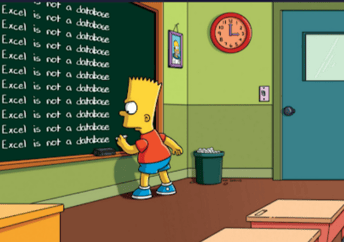
Stop doing this to yourself. The time for this manual labour can be used for valuable conversation and trust-building with prospects. Here are more reasons why Excel makes a bad sales management tool:
- Excel is made for manual data entry
For a lot of us, Excel IS data entry. For a sales management software to work, there has to be a way to easily fill up new contacts that is systematic and user-friendly. Manually putting in new data is just a recipe for disaster. One wrong digit in a phone number and you’ve basically lost a contact for no reason.
- It’s hard to integrate data with Excel
Excel is not meant to be integrated with a lot of softwares, even ones made by Microsoft. You have to constantly export spreadsheets and download it to your device. Lots of sales management apps provide integration with other sales tools online so you don’t have to click ‘Export as .csv’ all the time.
- Your team can’t collaborate on Excel
Are you constantly sending the same Excel document back and forth through email or God forbid, WhatsApp? How would you know which one has the latest update? Excel is not a collaborative software, and so time-sensitive projects would just collapse due the slow process and margins of error.
- Excel is not mobile-friendly
As a salesperson for SaaS, you need to constantly be on your feet for meetings, follow-ups and closing that deal at the right moment. You want a sales management software to help you with real-time updates and easy data-retrieval at your fingertips. Excel just doesn't cut it.
Not using proper sales management software also contributes to communication breakdowns between team members and prospects. When you only rely on Excel or Outlook to store contacts, it’s hard to track conversation and tasks. You would lose valuable information on the daily.
In comparison, these are the benefits of using sales management app or your SaaS:
- Constantly improve your sales methods
- Do more with less tools (as long as you’re using an integrated one)
- Schedule and activate tasks automatically
- Accurately predict your sales
- Get new hires up to speed quickly
- Provide a better customer experience
- Engage prospect with better strategy
- Perform bulk actions with ease
- Monitor, track & measure better
Ditch the spreadsheets and sticky notes. Upgrade to the real deal for a seamless customer relationship management that boosts your sales and helps you scale your SaaS business.
9. Why should you adopt sales technology?
As of today, sales enablement tool usage has increased by 567%, with the most popular tool being Customer Relationship Management (CRM). There is evidently an inherent demand for technology and automation among sales teams. Remote work has become a norm and sales managers found themselves an urgent need to remain agile and proactive during times of uncertainties.
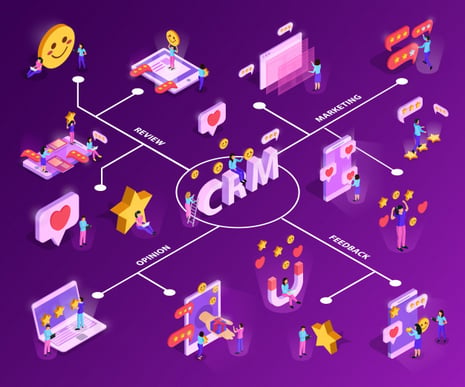
Sales technology offers so many benefits to your sales force, this includes:
- Improving sales productivity & efficiency
- Automating data entry
- Segmenting customers and qualified leads
- Forecasting sales projections
- Having a centralised database to store contact information
- Easy access to customers information & last conversation
- Tracking & monitor sales pipeline
- Reducing human error
- Creating real-time sales report
- Reminding meetings & follow-ups
- Managing teams & projects
- Securing and protecting against data loss
- Up-selling & cross-selling
- Improving transparency & team communication
- Providing big-picture review of sales operations with integrated data
- Helping remote sales to perform better
10. What are some SaaS sales technology you can use?
A collection of software, tools, web applications and technologies is called a tech stack. In terms of sales, a sales tech stack is a group of sales software that a company strategically builds to automate and streamline their sales processes.
Why use more than one software? Because your sales operation is a complex mechanism with people, software and data all moving in different directions. In a survey, salespeople report that they only spend 36% of their time selling. The rest of their week was spent with other tasks such as admin, reporting and trouble-shooting. That’s only 1/3 of work hours! Sales tech stack reduces this inefficiency so salespeople can have more time consulting your customers.
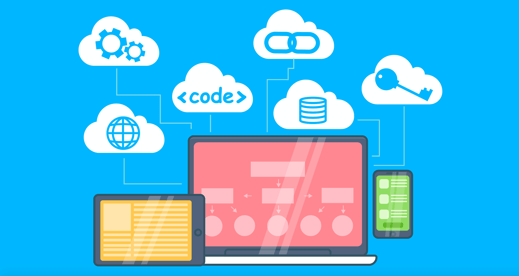
As a goal-oriented SaaS sales team, there are 5 key activities that you can optimised by using sales technology and tech stack:
- Intelligence
Sales intelligence tools can help you gather insights and analysis about prospects and customers. Customer intelligence is a vital process of inbound sales so you target the right people from the get-go. Some sales intelligence software include LinkedIn’s Sales Navigator, Oracle’s Data Fox, and Clearbit.
- Enablement
Sales enablement tools connect the right decision-makers for the right conversation in the right way. Done right, your enablement can be optimised with scalable and standardised practices. Examples of sales enablement tools are Dooly, Intercom, and Freshworks.
- Engagement
Every salesperson knows the importance of engaging prospects using the right content and data. We know it needs plenty of strategy and planning. Sales engagement tools combine the talent in your team with digital assistance that communicate effectively with customers. Such tools include Hubspot CRM, Mailchimp, Intercom, and yes even Zoom.
- Analytics & Measurement
If you don’t monitor and measure your sales performance, how would you know what works and what needs to drop? Sales analytics tools can greatly help you keep at eye on key metrics and ensure that your SaaS is optimised for your customers. There are tools such as Tableau and Clari that track sales numbers for you.
- Pipeline & Sales Management
Sales management tools are a sales manager’s best friend at work. It allows you to get a helicopter view of the whole operation and track your team’s work in real-time. You need this tool to coordinate and delegate better so no contact will go missing and no customer inquiry go unanswered. Top sales management software today include Ambition, Pipedrive and Zendesk.
How to start building your first sales tech stack? Begin by looking at your sales process. Then, list out the needs and challenges each stage is facing. Next, you can research and look for sales tools online. You can start with these basic sales technology & tools:
- Customer relationship management (CRM)
- Live chats
- Email & tasks scheduler
- Meetings & demos interface (Video Conferencing)
- Quotation/invoice generator
- Team communication apps
Read more: What is CRM & How Does It Work?
It’s better to use an all-in-one holistic sales solution to integrate many tasks and make them work together. A sales tech stack eliminates manual work, reduces margins of error and helps your team focus on the bigger picture of reaching your sales goals and quota in another tough year.
11. Final questions to ask before adopting sales technology
So far, do you think you are ready to take the next steps? Here are some more things to think about when building or expanding a sales technology stack:
- Is my team and business operations ready for sales technology?
- Will I be able to invest time and money in this new technology?
- What are my sales processes and where would sales tools come into the picture?
- Can this particular sales tool help me do more tasks, or can it do just one type of task? (Sales tech golden rule: Use better tools, not more tools)
- Do I know what I want to solve?
- Will I be able to allocate time to train my team for this new technology?
- Will I be using this sales tool extensively?

Based on the answers from these questions, you might or might not decide whether it is time to adopt sales technology for your SaaS and digitise sales enablement. If you see that your team or business isn’t ready, take the time to do some internal restructuring and make sure everyone is on the same page.
Wrapping It Up
We’ve talked in length about sales enablement for SaaS; from the metrics, sales tips, remote work, digital tools, and all things sales tech stack. We also delved into inbound sales and sales technology, two important topics for SaaS. Now that you know what inbound sales for SaaS is all about, it’s decision time. Once you’re ready to take on a new exciting digital sales enablement method, find out which one to start first.



